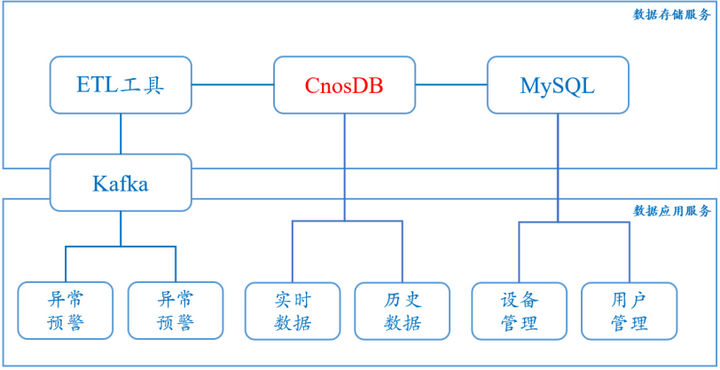

Did the community follow the CCF-CnosDB forum on May 11, 2022, where a civil engineering professor reported on the use of time-series data in bridge monitoring, and in this issue we will continue to talk about the application of time-series databases in the field of bridge monitoring.
This article is only a personal opinion, please bear with meif there is any bias
🤠🤠🤠
Time Series Databases for bridge structural health monitoring
1.Overview of bridge construction situation in China
China has a long history of bridge construction, dating back to ancient times. In recent years, the country has become known for its cutting-edge bridge designs and state-of-the-art construction techniques. There are more than 5,000 beam bridges in China, with a total length of 1.3 million kilometers, and more than one-third of the bridges have structural defects, varying degrees of damage, and hidden dangers of functional failure.
2.Strucutal defect and its impact of bridge
Structural defects in bridge construction can refer to any type of mistake or deficiency in the design, materials, or construction of a bridge that can compromise its safety or performance. Concrete bridge structures are susceptible to corrosion, carbonation, creep, shrinkage, water penetration, and alkali-silica reactions. One of the most common causes of damage to steel-reinforced concrete bridges is rebar corrosion.
If there are structural defects in a bridge, it can have serious consequences for the safety of the bridge and the people who use it, like loss of life, property damage, economic disruption, reputation damage.
3.Leveraging data in forecasting and maintenance
Data can be used to forecast the life of a bridge and plan for its maintenance because it can provide important information about the condition and performance of the bridge. By collecting and analyzing data on the various components of the bridge, engineers and maintenance professionals can identify potential problems or issues that may need to be addressed in order to extend the life of the bridge. For example, data on the stress levels, fatigue, and corrosion of the various materials used in the bridge can help to predict when those materials may need to be replaced or strengthened. Some of the most common types of data that are monitored include: Geotechnical data, environmental data, structural data, performance data.


4.Conventional Restore Sloution
The data storage of bridge structure monitoring has traditionally been carried out using relational databases, which need to provide data access services for monitoring, statistics, analysis, alarm, management and other modules. However, using relational databases also raises two major issues in bridge monitoring scenarios.
First, massive storage devices are required, so storage costs are rising. In order to accurately reflect the vibration of the bridge structure, the sampling frequency is generally much higher than 50Hz. Take acceleration sensor with a frequency of 50Hz as an example. There are 4.32 million data per day. In the case of a single index, the storage is about 4GB, and the storage for one year requires about 2TB of disk space. Apprently, due to the exponential growth of the demand for disk space coming from data growth, the capacity of ordinary disk arrays cannot meet the storage requirements of massive data.
Second, the efficiency of data retrieval and query is insufficient. We cannot obtain the required data sections at the second or even millisecond level. Traditional relational databases use partitions, indexes, etc. to enhance retrieval efficiency, but as storage capacity increases exponentially, its efficiency will gradually decrease. Therefore, the demand for real-time access to high-density monitoring data has become increasingly prominent.
5.Pain Point sloved by TSDB
Overall structure of the bridge monitoring system mainly composed of four parts:
First, it is an ETL tool, which provides real-time monitoring services for sensor data.
Second, in order to transmit alarm messages to users in time, the distributed message system Kafka is used to transmit alarm data to online users.
Third is the time-series database we are talking about. ETL can repeatedly run queries in the time-series database, then analyze the data on the query results, and send the analysis results to the time-series database for storage.
Finally, there are traditional relational databases, such as MySQL, which store a large amount of general business data. The architecture diagram is as follows


Shown on this diagram, the time-series database is at the core, because it can store massive data with high frequency changes according to the uniqueness of time tags in sensor data, and at the same time, it can also achieve fast access to massive data. In this case, we used CnosDB as the time series data storage engine, which has a built-in HTTP API for easy storage and retrieval, and data can be marked, allowing very flexible queries. Data application services mainly include real-time data services, historical data services, fault diagnosis and early warning services, equipment management services, inspection management services, and user management services. Among them, the real-time and historical data are supported by CnosDB, the fault diagnosis and early warning service is analyzed and diagnosed by ETL, and the distributed message system Kafka is responsible for the distribution of data messages.
The time-series database solves the problems of incomplete collection of information and low collection frequency under the traditional storage scheme. It can greatly change the mode of relying on the experience of managers and technicians, and catch the best timing to empower repare and maintenace through real-time and comprehensive understanding of bridge conditions.
This paper refers to the article “Design and Implementation of Bridge Monitoring System Based on InfluxDB” by Yikun Han et al. in the journal “Modern Electronics Technology”.
